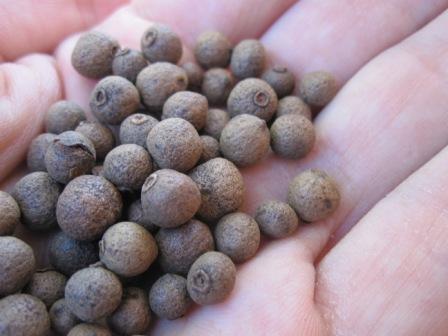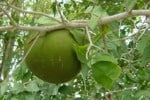Ribes nigrum, or Blackcurrant is a species of Ribes berrynative to central and northern Europe and northern Asia and is aperennial.
It is a small shrubgrowing to 1–2 m tall. The leaves are alternate, simple, 3–5 cm long and broad, and palmately lobed with five lobes, with a serrated margin. The flowers are 4–6 mm diameter, with five reddish-green to brownish petals; they are produced in racemes 5–10 cm long.
When not in fruit, the plant looks similar to the redcurrant shrub, distinguished by a strong fragrance from leaves and stems. The fruit is an edible berry 1 cm diameter, very dark purple in colour, almost black, with a glossy skin and a persistent calyx at the apex, and containing several seeds dense in nutrients. An established bush can produce up to 5 kilograms of berries during summer.
Plants from Asia are sometimes distinguished as a separate variety, Ribes nigrum var. sibiricum, or even as a distinct speciesRibes cyathiforme.
Blackcurrant A european native currant also popular for jams.
Benefits
Blackcurrants have a high vitamin C content – four times as much as oranges of an equivalent weight. They are rich in antioxidants and flavonoids and help to relieve inflammation as well as urinary tract infections. It is also a good source of potassium.
Maximising the benefits
Blackcurrants in all forms work as antioxidants, as anti-inflammatories and theanthocyanin flavonoids counter the bacteria that cause food poisoning and urinary tract infections.


Josh Beistle
Josh Beistle is a great marketer with over 10 years experience in on, and offline marketing.